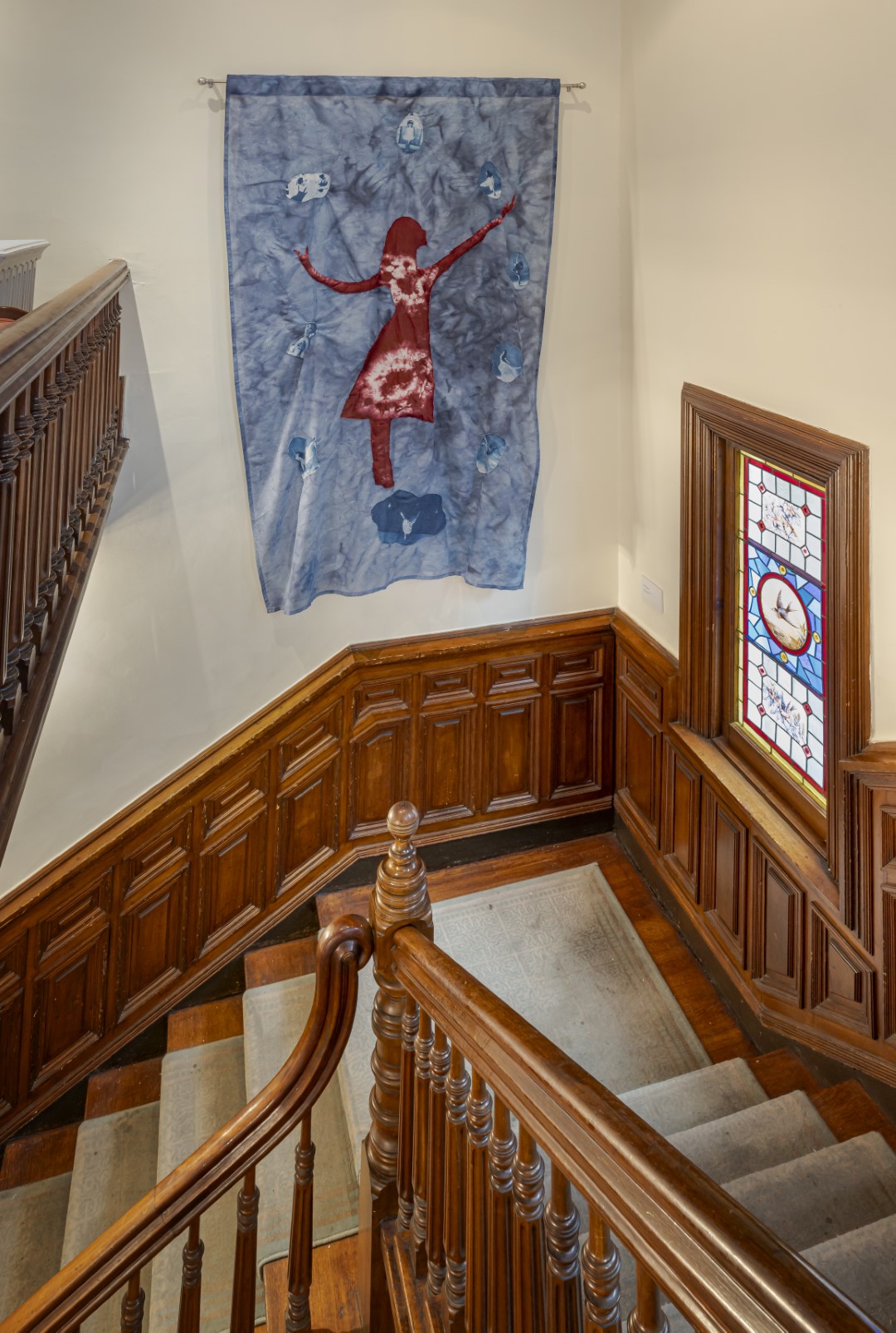Bio
Isabella Chen is a multidisciplinary artist whose work explores themes of femininity, movement, and environmental protection. From a young age influenced by ballet, which led to her love for classical music and painting. Isabella combines traditional art forms with experimental techniques to examine the tension between physical expression and societal constraints. Drawing from her love of classical music, Impressionism, and her own experiences as a woman, her practice spans cyanotype photography, hand-stitching, and installation art. She uses the medium of cyanotype to capture dynamic ballet movements, creating a visual dialogue about strength, vulnerability, and the complexity of the female experience. By blending her own body as subject matter with artistic processes, Isabella’s work challenges conventional notions of identity and female empowerment.
Artist Statement
This installation explores the female body as a site of discipline, transformation, and resistance. Drawing from a background in ballet, the artist uses cyanotype printing on layered sheer fabric to investigate the expectations placed on women to embody grace, control, and silence. Ballet becomes both subject and metaphor—its rigid beauty standards and concealment of pain mirroring broader societal ideals of femininity.
The work challenges how female labor—emotional, physical, and aesthetic—is often rendered invisible. Through the cyanotype process, the artist exposes her body under sunlight, using the act of printing as a public performance. The body becomes not only an image, but a participant in reclaiming space and visibility. The initial prints, lost due to weak UV exposure, reflect how easily female effort can vanish when unacknowledged by dominant systems. Reprinting the work in public transforms that fragility into protest.
Multiple layers of sheer fabric represent the artist’s evolving identities and stages of womanhood. Their transparency alludes to the contradictory expectations women face: to reveal and conceal, to endure and appear effortless. These veils reference not only the aesthetics of ballet, but also the cultural structures that demand perfection while hiding the cost of achieving it.
This installation sits at the intersection of personal narrative and feminist critique. It questions who gets to control the narrative of the female body, and how art can make visible what has long been obscured. In reclaiming that visibility, the artwork turns vulnerability into authorship, and beauty into a tool of resistance.







